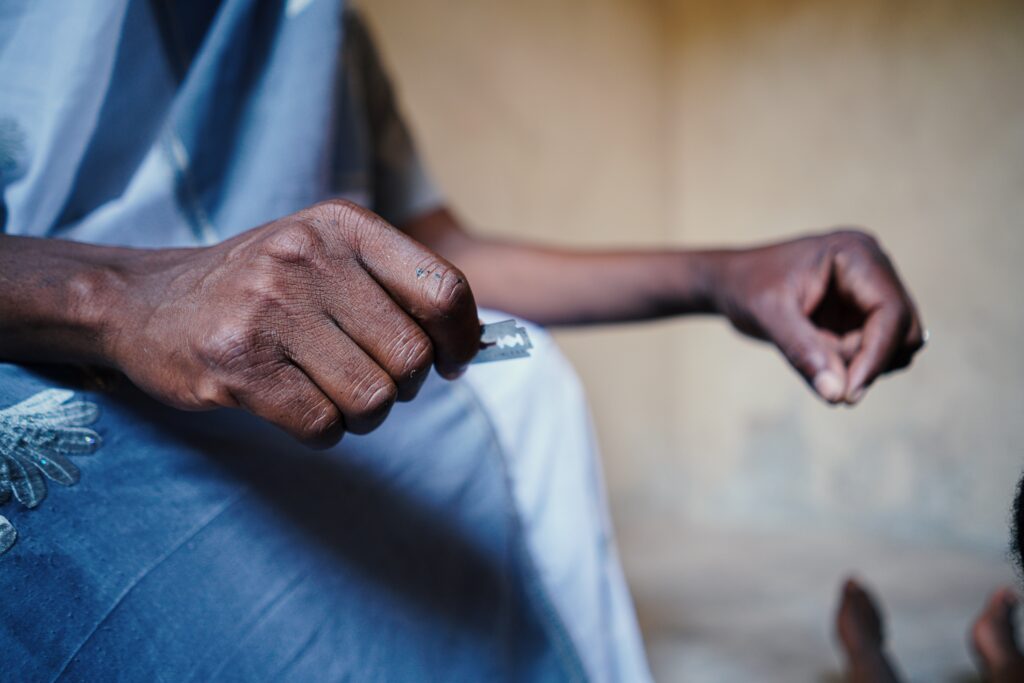Is female genital mutilation (FGM) on the rise in Europe?
Is female genital mutilation (FGM) on the rise in Europe?
Despite being prohibited in the European Union, an estimated 600,000 women residing in Europe have experienced female genital mutilation (FGM).
Female genital mutilation (FGM) refers to a set of procedures involving the partial or complete removal of external female genitalia or inflicting harm on the female genitals for non-medical reasons. This practice is predominantly conducted by traditional circumcisers using blades and often without the use of anaesthesia. Globally recognised as a grave violation of human rights, FGM raises significant concerns due to its impact on the physical and psychological well-being of affected individuals.
Female genital mutilation in the world
The United Nations defines FGM as “harmful traditional practices, grounded on discrimination, on the basis mainly of gender, often involving violence and causing physical or psychological harm or suffering, prescribed or kept in place by social norms that perpetuate male dominance and inequality of women.”[1] An estimated 68 million girls globally are expected to be at risk of experiencing FGM by the year 2030, as the European organisation End FGM EU declares.[2]
While this practice is internationally recognised as a violation of the human rights of girls and women, it persists mostly in 29 countries in Africa and the Middle East. FGM has also been documented in India, Indonesia, Iraq, Malaysia, Colombia, and Peru. It is almost universal in Somalia, Guinea, Djibouti and Egypt, with prevalence levels above 90%.[3]
In communities where FGM is prevalent, a strong patriarchal structure is evident, often justifying the practice as a rite of passage from girlhood to womanhood and as preparation for marriage. FGM is employed to suppress female sexual desire and safeguard virginity. Additionally, in certain communities, it is rationalised on grounds of health and hygiene.[4]
The characteristics of the mutilation, the age of occurrence, and the method employed are influenced by factors such as socio-economic background, ethnic group, and country.[5]
FGM and religion
Although FGM has been practised for over 2000 years, it is not mandated by any major religious texts, and numerous religious leaders have condemned it. Nevertheless, FGM is rooted in the traditions and beliefs of different communities, making it prevalent among various religious groups, including Muslim, Christian, and Jewish communities.[6]
Scholars from both Christian and Islamic traditions have unequivocally opposed FGM, issuing explicit statements affirming that it is not a religious obligation and contradicts the fundamental principles of each faith. Nevertheless, within communities, there persists a prevalent belief that FGM is a religious obligation.[7]
The rising of concerns about FGM in Europe
Despite being prohibited in the European Union, an estimated 600,000 women residing in Europe have experienced FGM. In 13 European countries, 130,000 girls are considered to be at high risk of undergoing this procedure.[8]
Due to the migration of people from regions where it is practised, some member states of the European Union have experienced an increase in FGM cases. Annually, a minimum of 20,000 women and girls arrive in Europe as asylum seekers from countries with a risk of it. Various organisations, including the European Parliament, the European Institute for Gender Equality, and the European Commission, have implemented measures such as laws, resolutions, studies, rules, and concrete actions to prevent and restrain FGM.[9]
On 6th February, 2023, ahead of the International Day of Zero Tolerance for Female Genital Mutilation (FGM), some members of the European Commission presented a commitment to eradicate this violation of human rights. Their statement affirmed that:
Last year, the Commission proposed EU-wide rules to combat violence against women. The new rules will include the criminalisation of FGM throughout the EU. This year, we will also present a recommendation on how to prevent harmful practices against women and girls in the first place.[10]
In September 2020, the European Commission approved the Pact on Migration and Asylum,[11] which ensures eligibility for international protection for women and girls at risk of suffering FGM. The cessation of FGM is also identified as a prioritised action in the EU Action Plan on Human Rights and Democracy for the period 2020-2024.[12]
FGM: a matter requiring immediate focus
The persistence of female genital mutilation (FGM) in Europe despite legal prohibitions highlights the complex challenges in combating this grave violation of human rights. With an estimated 600,000 women having experienced FGM in Europe and 130,000 girls at high risk, the issue demands urgent attention. The intersection of cultural traditions, patriarchal structures, and migration underscores the need for comprehensive, culturally sensitive approaches.
The commitment by members of the European Commission to criminalise FGM EU-wide and their dedication to preventative measures demonstrate positive strides. As Europe confronts this pressing issue, the ongoing initiatives and international cooperation signal hope for a future where FGM is eradicated, and the rights and well-being of women and girls are safeguarded.
Learn more about religion and society on the EARS Dashboard
Sources
[1] Female genital mutilation in Europe. Parliamentary Assembly, Council of Europe
[2] FGM in Europe. End FGM European Network
[3] Female Genital Mutilation in Europe. CESIE (Centri Europeo di Studi e Iniziative)
[4] Ibidem
[5] Types of FGM. End FGM European Network
[6] Religion & FGM/C. FGM/C Research Initiative
[7] Ibidem
[8] Female genital mutilation: where, why and consequences. World Health Organization
[9] Female genital mutilation. European Institute for Gender Equality
[10] International Day of Zero Tolerance for Female Genital Mutilation: Commission calls to end this crime, which violates human rights. European Commission
[11] A fresh start on migration: Building confidence and striking a new balance between responsibility and solidarity. European Commission
[12] EU Action Plan on Human Rights and Democracy 2020-2024. European Union External Action






